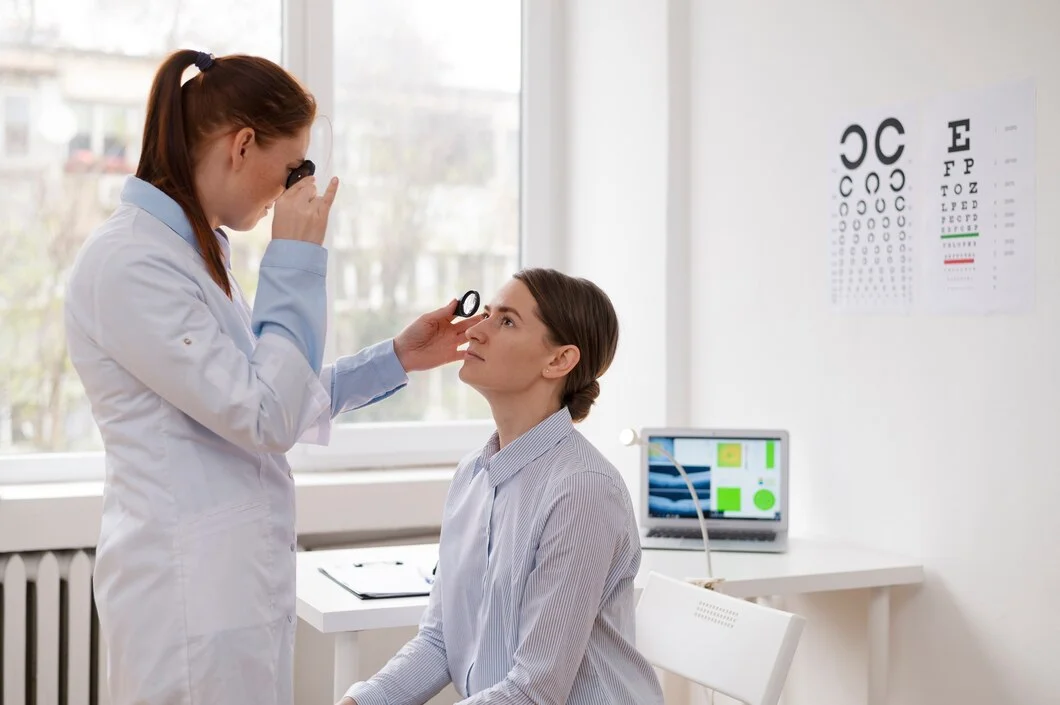If you have diabetes, you may develop diabetic retinopathy. This eye condition develops when high blood sugar levels damage blood vessels in the retina. This can result in eyesight difficulties. Diabetes is the leading cause of visual loss and blindness in people.
You may be able to avoid getting it. If you do get it, there are methods to slow it down. Almost half of those with diabetes have some kind of it. People who are in the early stages and do not exhibit symptoms may be unaware that they have it.
It is critical to schedule an eye examination in order to avoid serious eye disorders.

Diabetic retinopathy can progress through 4 phases.
Stage 1: Mild, non-proliferative diabetic retinopathy
This is the initial stage of diabetic eye disease, characterized by small bulges in the retinal blood vessels. These patches of swelling are referred to as microaneurysms.
These microaneurysms can allow minute amounts of fluid to flow into the retina, causing enlargement of the macula (the back of the retina). Despite this, there are frequently no obvious signs that there is a problem.
Stage 2: Moderate, non-proliferative diabetic retinopathy
At this point, the small blood vessels enlarge further, obstructing blood supply to the retina and preventing enough feeding. This stage will only be evident if blood and other fluids accumulate in the macula, causing vision to blur.
Stage 3: Severe, non-proliferative diabetic retinopathy
During this stage, a bigger section of the retina's blood vessels gets clogged, resulting in a significant decrease in blood supply to the area. The lack of blood sends a signal to the body to begin developing new blood vessels in the retina.
These new blood vessels are exceedingly thin and brittle, causing retinal edema, and resulting in noticeable hazy vision, dark spots, and even patches of visual loss. If these veins leak into the macula, abrupt and permanent vision loss may result. At this point, there is a high risk of permanent vision loss.
Stage 4: proliferative diabetic retinopathy.
At this advanced stage of the disease, new blood vessels continue to form in the retina. These small, fragile, and bleeding-prone blood veins cause scar tissue to grow inside the eye. This scar tissue can pull the retina away from the rear of the eye, resulting in retinal detachment. A detached retina often causes blurriness, a smaller field of vision, and perhaps irreversible blindness.

Managing Diabetes:
Blood Sugar Control: This is crucial. Maintaining good blood sugar levels can slow down the progression of diabetic retinopathy and even improve vision in some cases.
Blood Pressure Control: Keeping your blood pressure in check helps maintain healthy blood vessels in the eye.
Eye Treatments:
Laser Treatment (Photocoagulation): This uses lasers to seal leaking blood vessels or shrink abnormal blood vessels to prevent further damage.
Anti-VEGF Injections: These injections target a protein that promotes blood vessel growth. This can help reduce swelling and improve vision.
Vitrectomy: In severe cases with bleeding or scar tissue in the eye, surgery may be needed to remove them.
Before taking any treatment it’s important to seek medical advice.
The bottom line
Diabetic retinopathy is a serious eye disease that can cause permanent visual distortion or loss. Any visual changes, such as blurriness, poor night vision, or an increase in eye floaters, should trigger a visit to the eye specialist.
Book appointment at Elite Eye Care, best eye care clinic in New York, if you have any eye problems.
